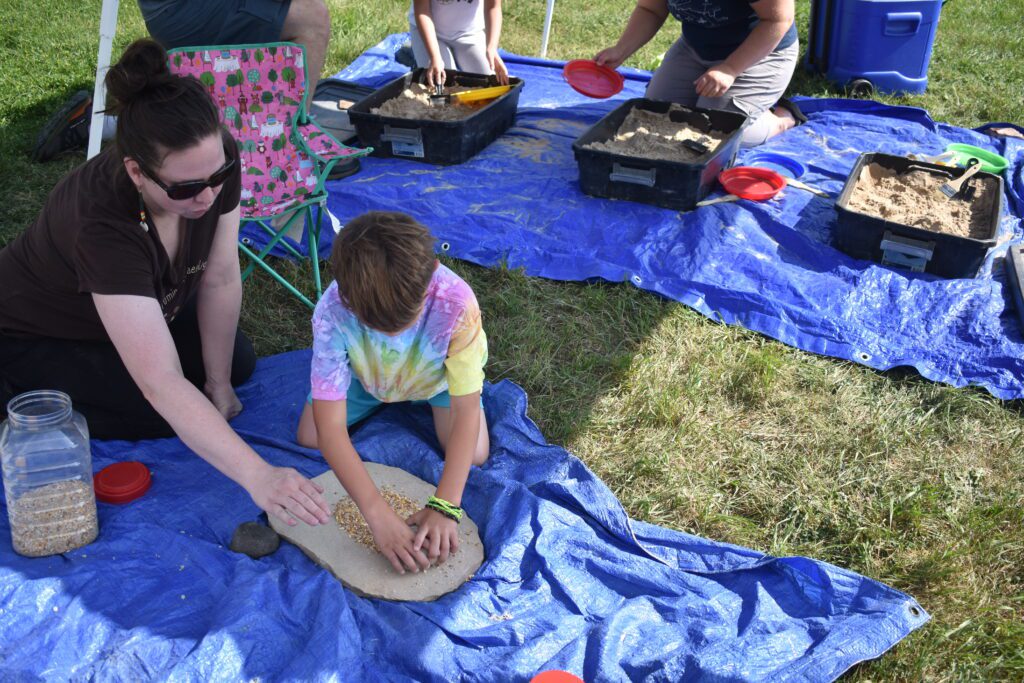News
Dave McKee Talks about Archeology at Fort Phil Kearny

On Saturday, August 19, over 30 people attended the Fort Phil Kearny/Bozeman Trail Association program about archeology, flint knapping and learning how to toss the atlatl. Stations were set up for each part of the program, and attendees could rotate between them.
Dave McKee, who completed a 34-year career with the U.S. Forest Service as an archaeologist and tribal liaison in several areas, as well as President of the FPK/BTA association, opened the program with a talk about archaeology.

He asked the crowd what questions might come to mind if they found an arrowhead or a spear head while hiking or bike riding along a trail. Questions ranged from wondering when were they here; how long ago were they here; what was he throwing it at; how long had it been laying there; was it an Indian camp site?
McKee said he wondered how they lived, what they ate, when were they here, did they move around a lot?
He displayed several replicas of different arrow points and spear heads. He said that the Folsom points come after the Clovis point and are hard to make, but they are widespread throughout the West. Other point styles are regional or local points. He added that the name of many points comes from where the first one was found, or in some cases the name of landowner on whose land the artifact was found.

He said that many points were made from obsidian, and he talked about some unique properties of the black volcanic glass.
He said another example of trade was Knife River flint, which originates in North Dakota, but tools made out of it have been found throughout the west as well.
He talked about collecting artifacts on public land, and that if someone picks up a random arrow or spear head, they can take a chapter out of the story of ancient habitation. It is better to leave things in place to tell the whole story, or at least document exactly where it was found.
The attending youngsters got to dig for treasures in sand boxes and practice grinding corn into meal for bread, much like the ancient peoples did thousands of years ago. Wheat, corn and other grains could be made into bread.

The boxes were supplied and sponsored by the Sheridan/Johnson County Chapter of the Wyoming Archaeological Society. Kristin Campbell, of the Society, talked about the youngster’s learning about the past and asked one young boy about the dig.
There were several youngsters at the program, which was a family event and a day outside for everyone.
The stories about flint-knapping station and the atlatl throwing station will be posted separately.


Frank Grub
January 16, 2024 at 1:42 pm
Dear Sir,
I found you here accidentally and I am also were at the battlefields from Idaho to Arizona to collect arrow and spear heads, although I am from Germany and got a god son in Pine Ridge South Dakota. Would you might be interested to contact me asap to discuss where to put these artifacts and if a curator might be interested to take over for exhibition.
Frank